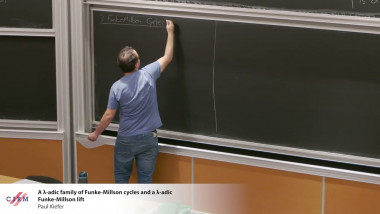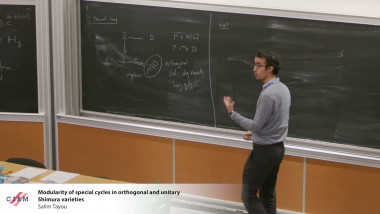
A $\lambda$-adic family of Funke-Millson cycles and a $\lambda$-adic Funke-Millson lift
De Paul Kiefer

Modularity of special cycles in orthogonal and unitary Shimura varieties
De Salim Tayou
Apparaît dans la collection : Prime numbers : new perspectives / Nombres premiers : nouvelles perspectives
Given an additive function $f$ and a multiplicative function $g$, let $E(f,g;x)=#\left \{ n\leq x:f(n)=g(n) \right }$ We study the size of $E(f,g;x)$ for those functions $f$ and $g$ such that $f(n)\neq g(n)$ for at least one value of $n> 1$. In particular, when $f(n)=\omega (n)$ , the number of distinct prime factors of $n$ , we show that for any $\varepsilon >0$ , there exists a multiplicative function $g$ such that $E(\varepsilon ,g;x)\gg \frac{x}{\left ( \log \log x\right )^{1+\varepsilon }}$, while we prove that $E(\varepsilon ,g;x)=o(x)$ as $x\rightarrow \infty$ for every multiplicative function $g$.
